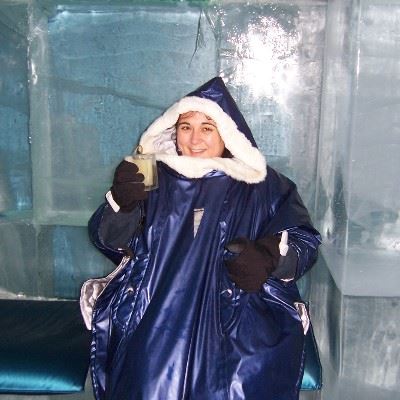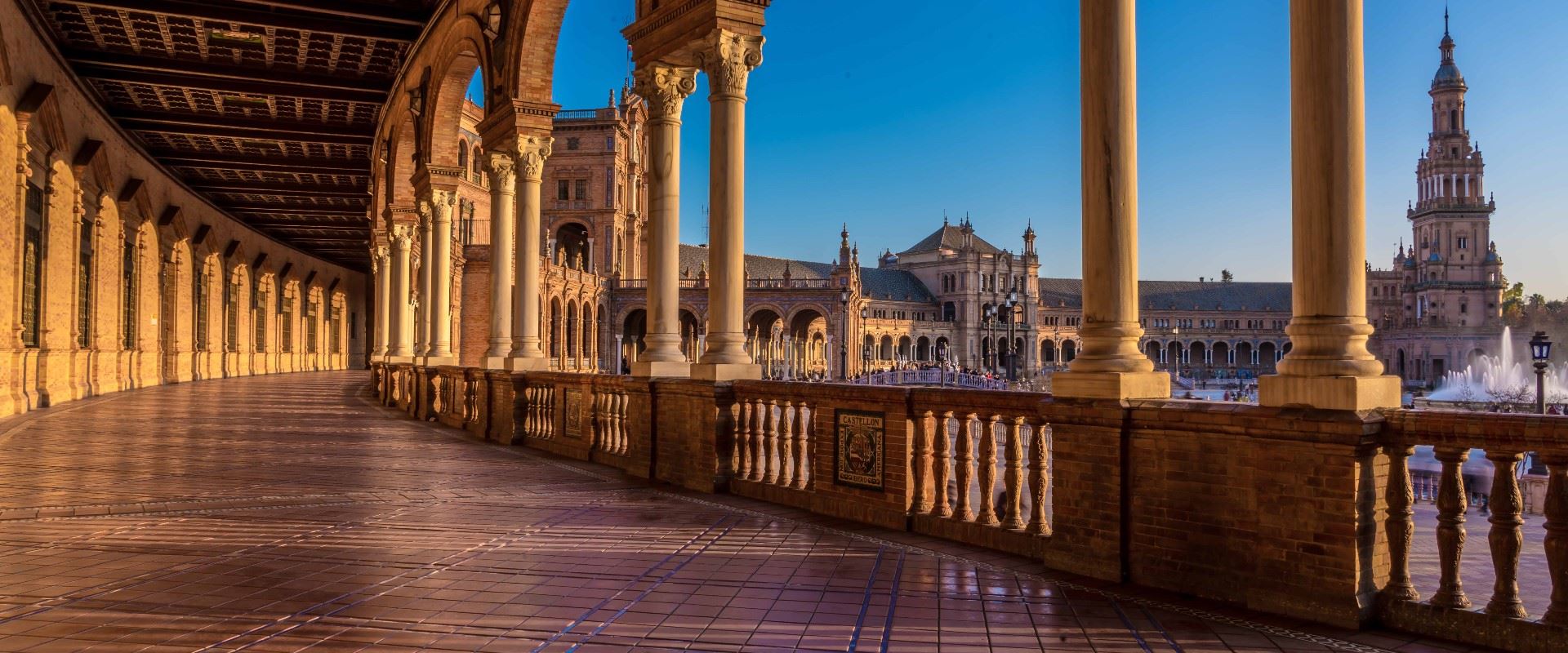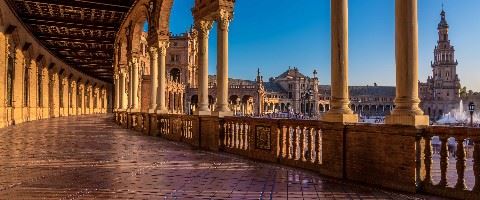The capital of Andalusia, one of the most important cities in Spain and its fourth largest with a municipal population of 750,000, Seville is set in the plain of the Guadalquivir River. It is thanks to this river, the only navigable river in Spain in ancient times that Seville, although 90km from the Atlantic Ocean, monopolised the trade from the New World and in the 16th and 17th centuries was one of the richest cities in the world.
It is, without doubt a spectacular city. It has 3 UNESCO World Heritage Sites; the Alcazar Palace, The Cathedral and the Archive of the Indies. But its wealth does not stop there. Two world class fairs, the Ibero-American Exposition of 1929 and Expo ‘92 further reinforced the beauty, culture and innovative spirit of the city.
The 1929 Ibero-American Exposition, set in the 60 acre Marie Louisa Park which stretches along the Guadalquivir River, inspired the building of some spectacular pavilions representing all the north and south American countries from the United States to Argentina. Planted with exotic trees, this magnificent park is the perfect backdrop for these pavilions which now serve as museums, embassies or Government buildings. The jewel of them all is the Spanish Pavilion, designed by the architect Anibal Gonzales Alvarez-Ossorio representing the 54 provinces of Spain. Designed as a huge half circle with four separate entrances, the scale is monumental. It took 11 years to build in a mixture of Moorish and Renaissance styles with a floor area of 45,932 sqm and has been a favourite location for filming parts of Lawrence of Arabia, Star Wars and The Dictator.
The artist Murillo was born and lived in Seville on the edge of the famous Jewish ghetto where 400 Jewish families lived in peace for 200 years under the Moorish administration until they were expelled by the catholic kings in 1492. The ghetto, now called the Santa Cruz district, and its maze of streets hiding beautiful inner courtyards borders the Murillo gardens, the old Moorish city walls, the Royal Alcazar, still a palace of the Spanish Royal Family and the Cathedral of Seville with its converted Moorish minaret, the Giralda.
The Alcazar was modelled on the Alhambra in Granada but is much better preserved because the palace is still in use today. The oldest part of the building was part of the Roman wall above which the Moors, who inhabited Seville for 500 years, constructed the first palace which was subsequently rebuilt by the christian king Peter I in the 14th century in the style of the Moorish architects. The 16th century palace, adjoining the original Alcazar, was built by Charles V in 1526 to celebrate his wedding to Isabella of Portugal.
There are 165 churches in Seville but the crowning glory of the city is its Cathedral. After St Peter’s in Rome and St Paul’s in London, it is the 3rd largest in the world and the largest built in Gothic style. This spectacular building, crowned by the converted Giralda Minaret contains the mausoleum of Christopher Columbus and the largest altar piece in the world, painted with two and a half tons of gold from the mines in Mexico and Peru. The sacristy, in Spanish Renaissance style, with paintings by Murillo and the Chapter House, with the first Oval Dome ever constructed, should also be visited.
But it is not only the fabulous monuments that make Seville so special. It is a vibrant modern city with very reasonably priced cafés, bars and restaurants and, on the river’s west bank, the fascinating cosmopolitan district of Triana, Seville’s gypsy neighbourhood, full of charming, paved streets, ceramic shops, atmospheric tapas bars and restaurants.
In the summer Seville is hot, being only 400km from the Sahara desert - Madrid is actually further away - but don’t let that put you off visiting at any time of the year as this is one of Europe’s most fascinating and rewarding cities and easily explored on foot.








